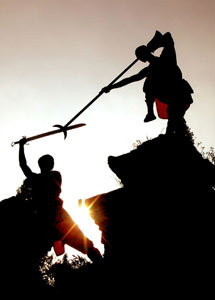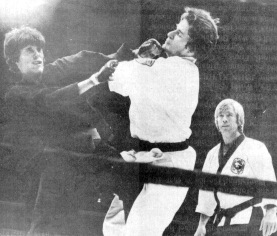Have A Drink On Me

Alcohol is occasionally referred to as spirits. Having spirit in the martial arts is favorable, as in "fighting spirit". But too much of a good thing is no good. Alcohol does indeed have health enhancing properties, and artists of every type have composed under its influence. The benefits of consumption are optimal at about .06% in the circulatory system - about two drinks for most people. Beyond that, things tend to go awry. To say that the effects of alcohol have been known to produce violent tendencies in some is somewhat cliche. A good portion of street fights and even domestic disputes have been drinking related. Squaring off with someone who has "beer muscles" is risky business, as getting tanked significantly reduces one's superego (the Freudian seat of good behavior) and increases the pain threshold. Drunkards have also been known to exhibit unusual levels of strength.
Research has revealed that having a glass of wine twenty minutes before studying something enhances memory retention. When social inhibitions are thwarted we learn better! An adult student showed up one night at the dojo with whiskey on his breath. (Maybe he read that report.) He was relatively new, and he geared up for what was maybe his second time at kumite. When it was his turn to spar with one of the black belts, he attempted to project some of his abusive tendencies onto his senior. He (the novice) came out of it with a broken nose, but I don't think he felt much. Imbibing booze before a rigorous karate class is not recommended, and his pre-training libation of Jack Daniel's thankfully came to an end. See, you can learn something from drinking.







